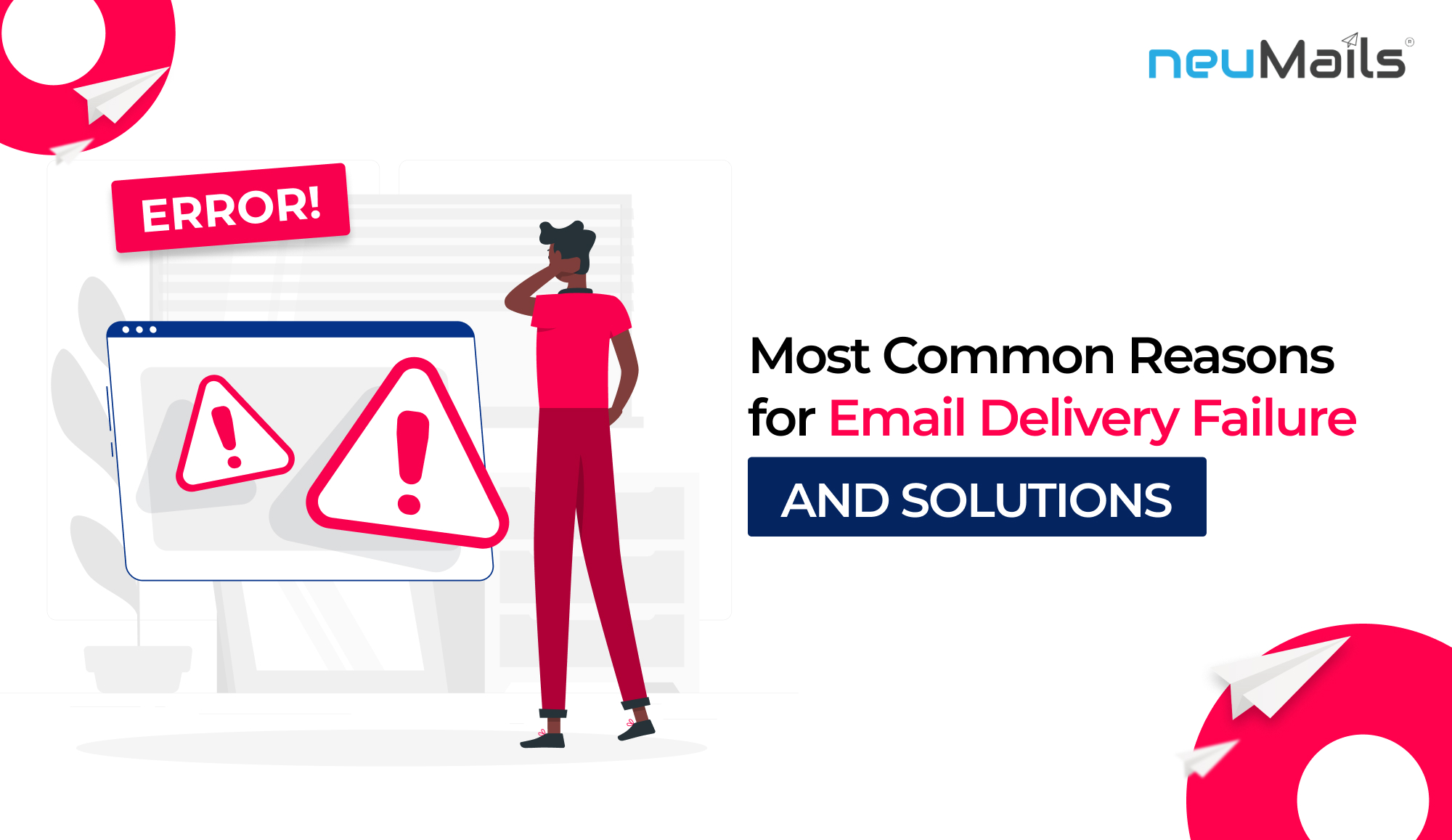Have you ever encountered a scenario where an important email you sent failed to reach its intended recipient? This can be frustrating, especially when time-sensitive matters are involved. Although email has undoubtedly revolutionized the way we communicate, it isn’t always foolproof.
In this blog, we’ll delve into the most common reasons for email delivery failure and provide practical solutions to overcome these challenges.
TABLE OF CONTENTS
Common Email Delivery Failures With Solutions
- Incorrect Recipient Address
One of the primary culprits behind email delivery failures is an incorrect recipient address. A small typo or a missing character in the email address can lead to the email delivery being bounced back. Always check the recipient’s email address twice before sending anything. In addition, use auto-complete features in email clients to reduce the likelihood of errors.
Solution: Regularly update your contact list and use features like auto-complete to minimize address errors. If a bounce occurs, correct the address and resend the email.
- Emails Marked as Spam
Email providers have robust spam filters to protect users from unsolicited and potentially harmful emails. However, legitimate emails can sometimes get caught in these filters due to certain characteristics that trigger the spam algorithms.
Solution: Craft well-formatted emails with relevant content and avoid excessive use of promotional language. To increase deliverability, ask recipients to add your email address to their contact list.
- IP Address Reputation Issues
Email servers assess the reputation of the IP address sending the email to determine whether it’s likely to be spam. If your IP address has a poor reputation due to past spamming behaviour, your emails might face delivery issues.
Solution: Follow recommended practices, send pertinent content, and respond to customer concerns quickly to maintain a positive sending reputation. Consider using a reputable email service provider with a clean IP address.
- Attachment Size Limitations
Most email servers impose attachment size limits to prevent congestion and ensure smooth email delivery tracking. By sending large attachments emails can be rejected or delayed.
Solution: Check the recipient’s attachment size limit or use cloud storage services to share large files. When you can, compress files to make them smaller.
- Mailbox Full or Over Quota
If a recipient’s mailbox is full or has exceeded its storage quota, new emails will be rejected until space is freed up.
Solution: Advise the recipient to clear their mailbox or consider sending a smaller email with important information, urging them to manage their mailbox space.
- Domain Issues (DNS Misconfigurations)
Domain Name System (DNS) misconfigurations, such as missing or incorrect (Mail Exchanger) Mx records, can lead to delivery failures.
Solution: Regularly monitor your domain’s DNS settings and ensure MX records are correctly configured. Use online tools to verify the health of your DNS.
- Sender Authentication Failures (SPF/DKIM/DMARC)
SPF, DKIM, and DMARC are authentication protocols that verify the legitimacy of the sender. If these authentication mechanisms are misconfigured, emails might be rejected or marked as suspicious.
Solution: Set up and maintain SPF, DKIM, and DMARC records for your domain to establish trust with email servers and improve deliverability.
- Blacklisting
If your IP address or domain is added to a blacklist due to spamming or other suspicious activity, major email providers will block your emails, resulting in delivery failures.
Solution: Regularly monitor your IP address and domain on popular blacklists. If you discover blacklisting, follow the instructions provided to request removal.
- Temporary Server Issues
Temporary server issues, such as high traffic or maintenance, can lead to email delivery delays or failures. Usually, these problems get fixed on their own.
Solution: Be patient and give the recipient’s server time to recover. You can also try sending the email again later.
- Recipient Server Configuration
Recipient servers might have strict filtering rules that result in email rejection. These rules could be based on content, sender reputation, or other factors.
Solution: Review the content of your email to ensure it complies with recipient server policies. If possible, contact the recipient’s IT team to understand their specific filtering rules.
Conclusion
While email has transformed communication, it’s not immune to challenges that can disrupt the smooth flow of information. Understanding the most common reasons for email delivery failure empowers you to take proactive steps to mitigate these issues.
For a leading email marketing solution that can further enhance your email delivery rates and overall performance, consider integrating NeuMails. With its advanced features and capabilities, NeuMails can help streamline your email marketing efforts and maximize your outreach success.
FAQs
Q1. What is a bounce-back email?
A) A bounce-back email is a message generated by the recipient’s email server when it’s unable to deliver your email. It can be either a “soft bounce” (temporary issue) or a “hard bounce” (permanent issue).
Q2. How can I prevent emails from getting flagged as spam?
A) To avoid spam filters, use relevant and engaging content, avoid excessive use of capital letters and exclamation points, include an unsubscribe option, and authenticate your sender identity with SPF, DKIM, and DMARC.

